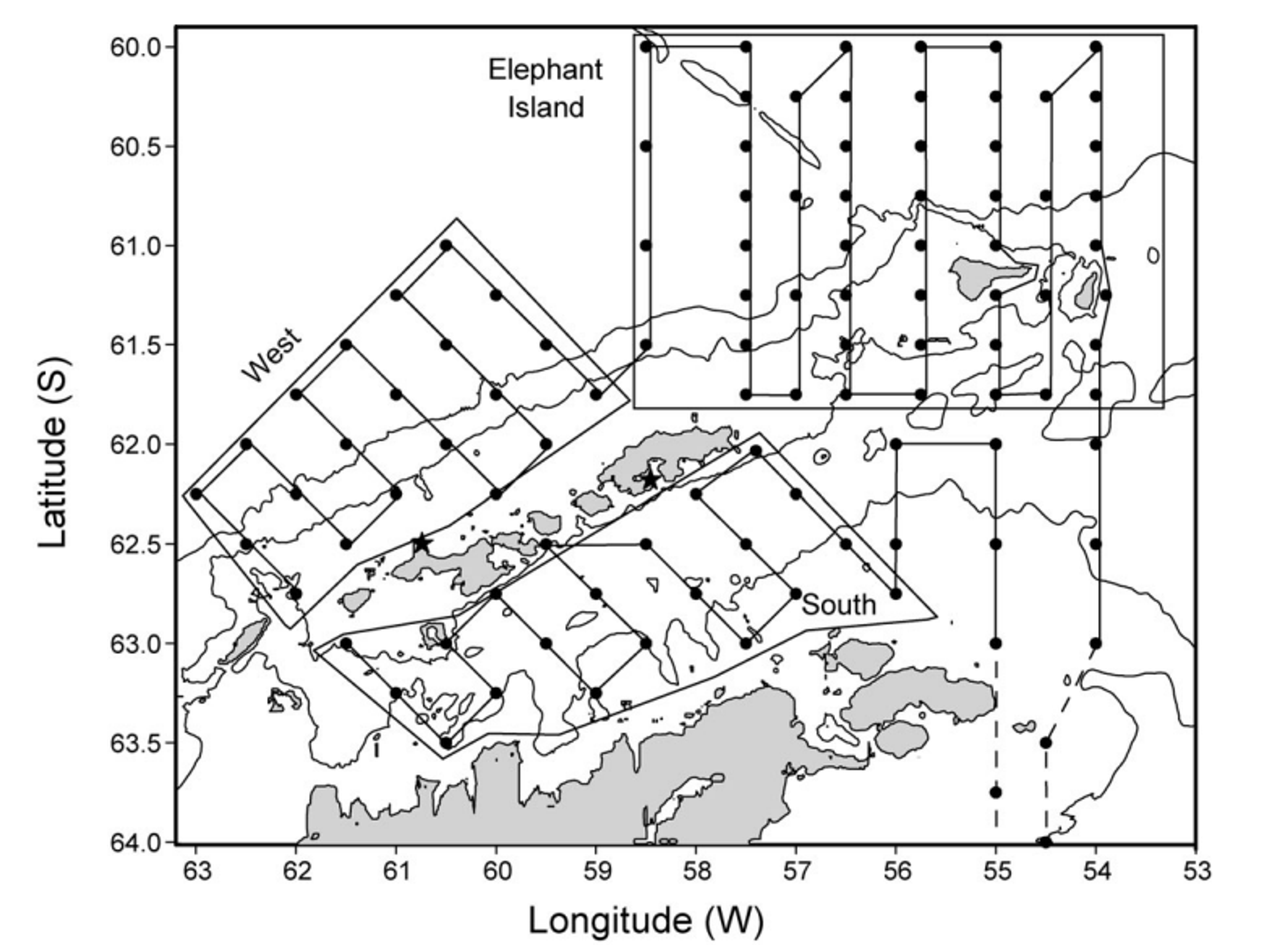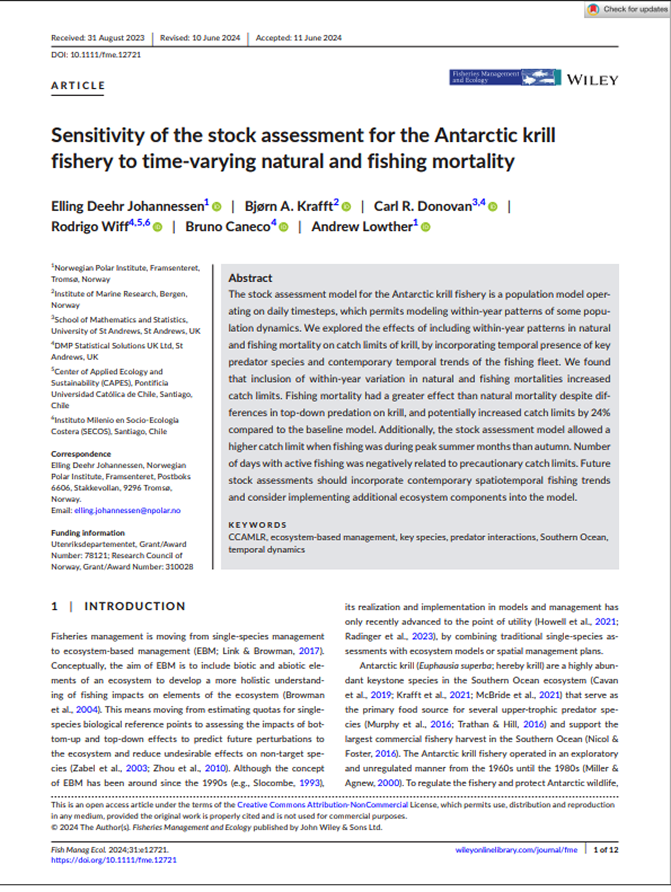Biomass
Fisheries management
Antarctic ecosystem
Krill (Euphausia superba)
Variations in the biomass of Antarctic krill (Euphausia superba) around the South Shetland Islands, 1996–2006
Summary
Researchers reexamined 11 years of underwater sound data (1996-2006) used to estimate krill populations around the South Shetland Islands, applying better mathematical models and improved methods for identifying different species. Their new physics-based stochastic distorted wave Born approximation (SDWBA) model generated krill biomass estimates that matched more closely with physical net sampling data than older calculation methods had achieved. The analysis revealed two significant population surges in 1996 and 2003 that corresponded with young krill recruitment events detected in traditional net surveys. Although this improved approach eliminated systematic measurement errors, it also increased data variability by excluding acoustic signals that were previously counted as krill, which may result in more cautious fishing quotas under current precautionary management frameworks.

1
The map shows the current AMLR research sampling area (2003–2006) with marked locations of permanent monitoring stations used for biological and water condition measurements, along with the broader survey region. The outlined areas represent the three US AMLR zones where krill population estimates are calculated. Depth contour lines indicate 500-meter and 1000-meter water depths.Key Findings
1
Found that krill body orientation caused the greatest variation in acoustic signals, followed by body condition (fatness) for krill longer than 25 mm.2
Showed that using the same acoustic identification criteria across all krill sizes and locations produces unreliable results, particularly for smaller krill under 30 mm.3
Confirmed that Northern krill (M. norvegica) consistently produce positive acoustic differences between 38 and 120 kHz frequencies, unlike air-filled organisms.4
Demonstrated that Northern krill can be acoustically distinguished from mesopelagic fish species when multiple frequencies are analyzed simultaneously.5
Results showed that acoustic identification ranges must be adapted for different krill species, body sizes, and regional characteristics rather than using universal values.6
Findings recommend adopting these enhanced methods for future krill population assessments and management decisions.

